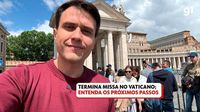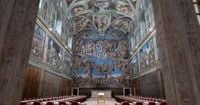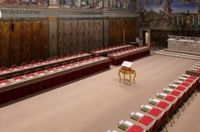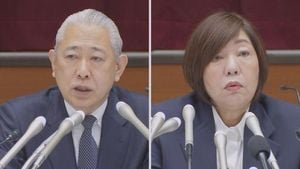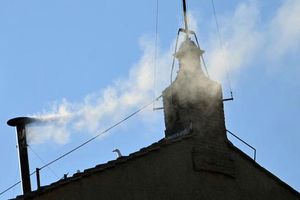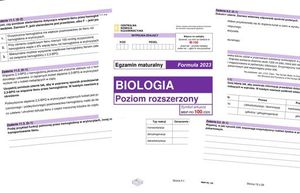The conclave to choose the new Pope officially began on Wednesday, May 7, 2025, with the traditional Pro Eligendo Pontifice mass in the Basilica of Saint Peter, Vatican City. The ceremony, presided over by Cardinal Dean Giovanni Battista Re, was attended by approximately 5,000 people and lasted about 90 minutes. It was a solemn occasion marked by prayers, hymns, and tributes to Pope Francis, who passed away in April at the age of 88.
Following the mass, the 133 cardinals under 80 years old, including seven from Brazil, processed solemnly to the Sistine Chapel, singing the Latin hymn Veni Creator Spiritus. This procession is a significant tradition that underscores the gravity of the conclave, which is tasked with electing the new leader of the Catholic Church.
At around 11:30 AM Brasília time (4:30 PM local time), the doors of the Sistine Chapel will close, and the cardinals will enter into a period of strict silence and seclusion. They will not be able to communicate with the outside world, adhering to a vow of confidentiality that has been a hallmark of papal elections since the 13th century.
The first vote is scheduled for 2:00 PM Brasília time (7:00 PM local time). Historically, the initial voting round rarely results in the election of a new pope, as cardinals typically use this time to gauge support for various candidates. The smoke signaling the outcome of this vote is expected to be black, indicating that a consensus has not yet been reached.
From the second day of the conclave, the pace will quicken, with up to four votes held each day—two in the morning and two in the afternoon. The smoke signals will appear at designated times: 5:30 AM, 7:00 AM, 12:30 PM, and 2:00 PM Brasília time. If the new pope is chosen, white smoke will rise from the chapel’s chimney, announcing to the world the message “Habemus Papam!” (“We have a Pope!”).
In the event that no consensus is reached after three days, the cardinals will take a 24-hour break for prayer and reflection. If, after 34 votes, no pope has been elected, the two candidates with the highest votes will face off in a runoff.
The Sistine Chapel, where the conclave is held, is not only a place of immense spiritual significance but also a masterpiece of Renaissance art. Built between 1473 and 1481 at the behest of Pope Sixtus IV, the chapel is adorned with frescoes by renowned artists, including Michelangelo, whose work on the ceiling between 1508 and 1512 has captivated millions. The chapel is a major tourist attraction, with about 6 million visitors annually.
During the conclave, the cardinals will be seated in a manner that allows for both the voting process and the solemnity of the occasion. The cardinals must achieve a two-thirds majority, which means at least 89 votes are needed from the 133 electors present. This requirement underscores the importance of consensus in the selection of the new pope, who will face the challenges of leading the Church in a world marked by crises such as climate change and geopolitical conflicts.
Among the cardinals eligible to vote, seven are from Brazil: Sérgio da Rocha, Jaime Spengler, Odilo Scherer, Orani Tempesta, Paulo Cezar Costa, João Braz de Aviz, and Leonardo Ulrich Steiner. Their participation highlights the global nature of the Catholic Church and the diverse backgrounds of its leadership.
The conclave is steeped in tradition, including the use of specific vestments and the solemnity of the voting process. Each cardinal must take an oath to maintain absolute secrecy about the proceedings. Any breach of this vow can result in severe penalties, including excommunication.
As the world watches, the outcome of this conclave will not only determine the next pope but also shape the future direction of the Catholic Church. The new leader will inherit a complex legacy, navigating the expectations of a diverse global congregation while addressing contemporary issues facing the Church.
With the first smoke signal expected around 2:00 PM Brasília time, the anticipation builds. Will the cardinals reach a consensus quickly, or will the conclave extend beyond the initial days? The world waits with bated breath for the results of the first vote and the implications it holds for the future of the Catholic Church.
